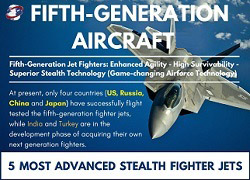Ten Latest Game-changing Defense Technologies
by IRIA Editorial Team
1. Smartphone Gun
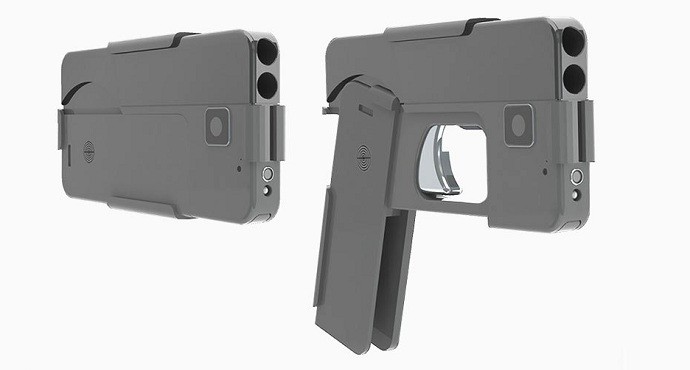
Ideal Conceal Smartphone Gun looks like a modern cell phone, but flip off that safety and it transforms into a double barrel .380 caliber pistol, that is about the size of a Samsung Galaxy S7 phone with a protective case.
The new smartphone-shaped gun, designed by a U.S. company, has the potential to revolutionize small arms industry. The new gun hasn’t even hit the market yet and already has 4,000 orders.
Ideal Conceal Pistol – a lightwight, small, two-shot pistol – resembles smartphone that will be virtually “undetectable” in its locked position.
“The idea follows the present-day demand for handguns that people can carry on a day-to-day basis, in a manner that makes carrying a gun easy,” said the Minnesota-based company Ideal Conceal which has designed the gun.
“Smartphones are everywhere, so your new pistol will easily blend in with today’s environment. In its locked position it will be virtually undetectable because it hides in plain sight,” it said.
The gun won’t be available until later this year and it is currently priced at $395.
For more details: Will new smartphone gun revolutionize small arms industry?
The new smartphone-shaped gun, designed by a U.S. company, has the potential to revolutionize small arms industry. The new gun hasn’t even hit the market yet and already has 4,000 orders.
Ideal Conceal Pistol – a lightwight, small, two-shot pistol – resembles smartphone that will be virtually “undetectable” in its locked position.
“The idea follows the present-day demand for handguns that people can carry on a day-to-day basis, in a manner that makes carrying a gun easy,” said the Minnesota-based company Ideal Conceal which has designed the gun.
“Smartphones are everywhere, so your new pistol will easily blend in with today’s environment. In its locked position it will be virtually undetectable because it hides in plain sight,” it said.
The gun won’t be available until later this year and it is currently priced at $395.
For more details: Will new smartphone gun revolutionize small arms industry?
2. Lockheed Martin’s ATHENA - Laser Weapon
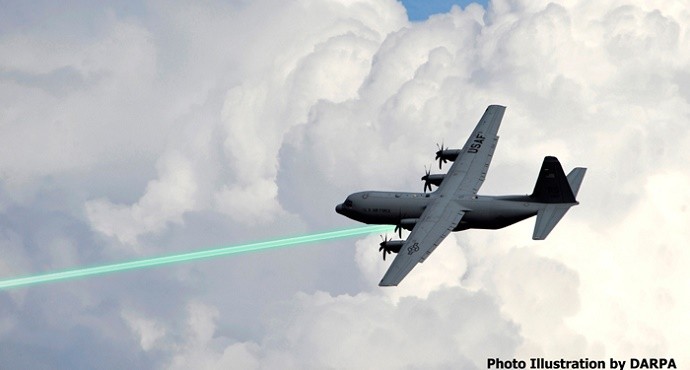
Laser guns will no longer be the realms of fiction movies as the swift technological advancement has brought governments and militaries much closer to their dream of arming fighter jets with laser.
“The technologies now exist,” said Paul Shattuck, company director for Directed Energy Systems at Lockheed Martin. “They can be packaged into a size, weight, power and thermal which can be fit onto relevant tactical platforms, whether it’s a ship, whether it’s a ground vehicle or whether it’s an airborne platform.”
Lockheed Martin’s ATHENA (Advanced Test High Energy Asset) lasers can disable a truck’s engine from over a mile away with only 30 KW of power. It is already in production and capable of up to 120 KW with the right set of modules. Lockheed is also set to deliver its first 60 KW RELY laser to the Army by the end of 2016.
Far from being science fiction, Lockheed Martin’s Air Defense Anti-Munitions (ADAM) has already weathered several tests destroying incoming rockets.
The US Army is planning to deploy the first laser weapons in 2023, revealed Mary J. Miller, deputy assistant secretary of the Army for Research and Technology to the House Armed Services Committee’s Subcommittee on Emerging Threats and Capabilities.
Miller explained that the Army wants to understand the lasers’ full capabilities ‘before we offer it to a soldier.’
Lockheed Martin is not the only company building laser weapons. Boeing has developed an anti-drone laser that takes only a few minutes to set up. Raytheon and Textron are also developing the technology.
With more companies testing the laser devices, governments and militaries will have the advantage of having a more affordable and effective system.
For more details: Laser weapons for fighters, drones ready for use
“The technologies now exist,” said Paul Shattuck, company director for Directed Energy Systems at Lockheed Martin. “They can be packaged into a size, weight, power and thermal which can be fit onto relevant tactical platforms, whether it’s a ship, whether it’s a ground vehicle or whether it’s an airborne platform.”
Lockheed Martin’s ATHENA (Advanced Test High Energy Asset) lasers can disable a truck’s engine from over a mile away with only 30 KW of power. It is already in production and capable of up to 120 KW with the right set of modules. Lockheed is also set to deliver its first 60 KW RELY laser to the Army by the end of 2016.
Far from being science fiction, Lockheed Martin’s Air Defense Anti-Munitions (ADAM) has already weathered several tests destroying incoming rockets.
The US Army is planning to deploy the first laser weapons in 2023, revealed Mary J. Miller, deputy assistant secretary of the Army for Research and Technology to the House Armed Services Committee’s Subcommittee on Emerging Threats and Capabilities.
Miller explained that the Army wants to understand the lasers’ full capabilities ‘before we offer it to a soldier.’
Lockheed Martin is not the only company building laser weapons. Boeing has developed an anti-drone laser that takes only a few minutes to set up. Raytheon and Textron are also developing the technology.
With more companies testing the laser devices, governments and militaries will have the advantage of having a more affordable and effective system.
For more details: Laser weapons for fighters, drones ready for use
3. China’s DF-ZF Hypersonic Glide Vehicle (HGV)
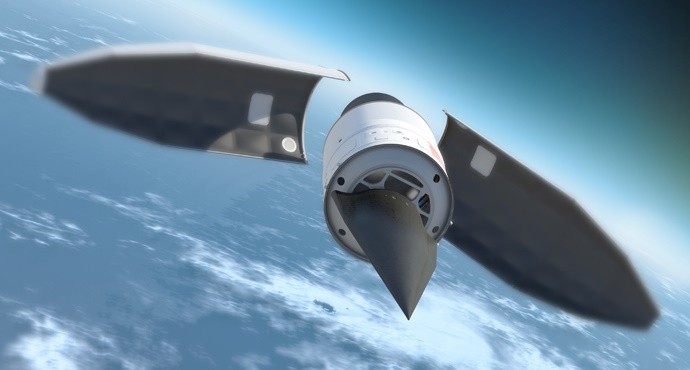
China’s ultra-fast DF-ZF hypersonic glide vehicle flies at speeds beyond five times the speed of sound. It was launched atop a ballistic missile fired from the Wuzhai missile test center in Shanxi Province, where China’s People’s Liberation Army (PLA) tests most of its long-range missiles.
“The DF-ZF is an ultra-high-speed missile allegedly capable of penetrating US air defense systems based on interceptor missiles,” Bill Gertz of The Washington Free Beacon wrote.
“The DF-ZF flight was tracked by US intelligence agencies and flew at speeds beyond Mach 5, or five times the speed of sound,” Gertz noted.
The DF-ZF HGV warhead is carried to the boundary between space and Earth’s atmosphere, roughly 100 km above the ground, by a ballistic missile booster.
“Once it reaches that height, it begins to glide in a relatively flat trajectory by executing a pull-up maneuver and accelerates to speeds of up to Mach 10.”
A sixth test of China’s hypersonic manoeuvring strike vehicle, the DF-ZF (previously designated the WU-14), took place on 23 November, 2015, according to US officials.
The high rate of testing for the glide vehicle is an indication China has placed a high priority on the weapon program and that it is making rapid progress.
For more details: China unveils new hypersonic weapon
“The DF-ZF is an ultra-high-speed missile allegedly capable of penetrating US air defense systems based on interceptor missiles,” Bill Gertz of The Washington Free Beacon wrote.
“The DF-ZF flight was tracked by US intelligence agencies and flew at speeds beyond Mach 5, or five times the speed of sound,” Gertz noted.
The DF-ZF HGV warhead is carried to the boundary between space and Earth’s atmosphere, roughly 100 km above the ground, by a ballistic missile booster.
“Once it reaches that height, it begins to glide in a relatively flat trajectory by executing a pull-up maneuver and accelerates to speeds of up to Mach 10.”
A sixth test of China’s hypersonic manoeuvring strike vehicle, the DF-ZF (previously designated the WU-14), took place on 23 November, 2015, according to US officials.
The high rate of testing for the glide vehicle is an indication China has placed a high priority on the weapon program and that it is making rapid progress.
For more details: China unveils new hypersonic weapon
4. Noise Gun (LIPE) - Nonlethal Plasma Weapon
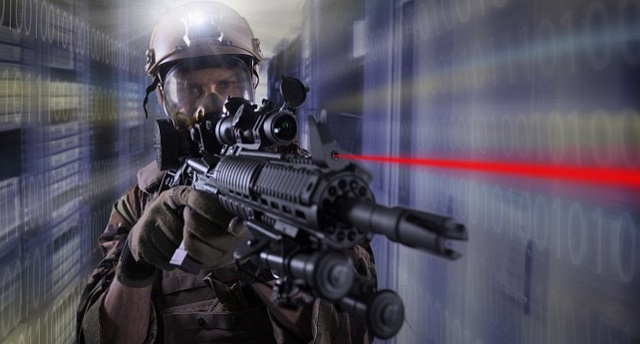
The US Department of Defense is in the process of developing a new nonlethal, but very high-tech, plasma weapon designed to disperse crowds and enemies with loud noises.
Instead of riddling a target full of holes, soldiers could stun them with an explosive scream-like sound, sending them into a panic.
Laser-Induced Plasma Effect, or LIPE, is a weapon that would hit targets with a blue ball of plasma — the state of matter just a little more solid than gas — and create an extremely loud noise.
LIPE is the brainchild of the Joint Non-Lethal Weapons Program, a group tasked with inventing better options for crowd control and checkpoint security. The noise comes from a unique manipulation of matter and energy to produce loud sounds at specific target locations, sort of like an incredibly precise missile of noise.
LIPE’s lasers fire extremely short bursts (around a nanosecond, or a billionth of a second) of directed high energy at a target. That target could be on a person, a windshield, or merely a single point in space. The energy, relatively harmless at the LIPE levels, separates electrons and nuclei at the target area to create a blue ball of plasma. Additional pulses of directed laser energy manipulate the ball to make a noise that seems to come from nowhere.
For more details: US Military developing ‘Noise Gun’, a nonlethal plasma weapon
Instead of riddling a target full of holes, soldiers could stun them with an explosive scream-like sound, sending them into a panic.
Laser-Induced Plasma Effect, or LIPE, is a weapon that would hit targets with a blue ball of plasma — the state of matter just a little more solid than gas — and create an extremely loud noise.
LIPE is the brainchild of the Joint Non-Lethal Weapons Program, a group tasked with inventing better options for crowd control and checkpoint security. The noise comes from a unique manipulation of matter and energy to produce loud sounds at specific target locations, sort of like an incredibly precise missile of noise.
LIPE’s lasers fire extremely short bursts (around a nanosecond, or a billionth of a second) of directed high energy at a target. That target could be on a person, a windshield, or merely a single point in space. The energy, relatively harmless at the LIPE levels, separates electrons and nuclei at the target area to create a blue ball of plasma. Additional pulses of directed laser energy manipulate the ball to make a noise that seems to come from nowhere.
For more details: US Military developing ‘Noise Gun’, a nonlethal plasma weapon
5. MAXFAS Exoskeleton Arm
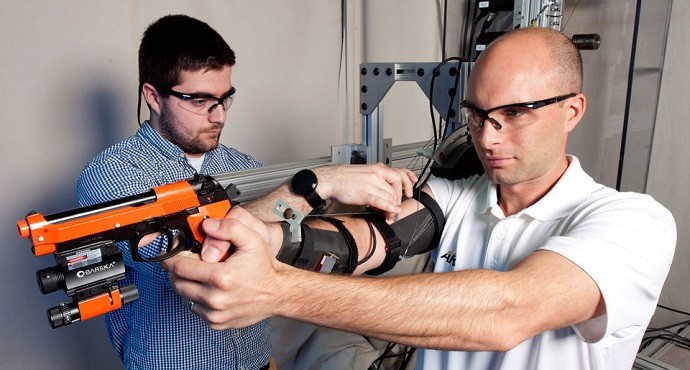
Mechanical engineers at the U.S. Army Research Laboratory (ARL) said they are testing an exoskeleton arm called MAXFAS in hopes of training new soldiers’ combat skills faster and generally improve marksmanship on the battlefield.
The exoskeleton is designed to eliminate the non-voluntary tremor in a shooter’s arm while aiming and shooting. Much like a puppet, the exoskeleton has a series of motors and cables to dampen the tremor to allow shooters to gain greater accuracy.
Dan Baechle, a mechanical engineer at the US Army Research Laboratory, has developed a new arm-mounted exoskeleton that is designed to be used to train new soldiers to reach shooting proficiency faster.
However, designing the exoskeleton for wear on the battlefield is further in the future because of the challenges of shrinking the motors and power source to a weight and size that would not slow down soldiers, Baechle said.
The arm exoskeleton is built of carbon fiber and weighs under a pound. However, the motors and cables are heavy and too unwieldy for a soldier to carry in combat, Baechle said.
MAXFAS could have a future in the Army’s pursuit to build a next generation combat suit for future soldiers called the Tactical Assault Light Operator Suit – better known as the Iron Man program.
For more details: U.S. Army testing exoskeleton arm to improve shooting accuracy
The exoskeleton is designed to eliminate the non-voluntary tremor in a shooter’s arm while aiming and shooting. Much like a puppet, the exoskeleton has a series of motors and cables to dampen the tremor to allow shooters to gain greater accuracy.
Dan Baechle, a mechanical engineer at the US Army Research Laboratory, has developed a new arm-mounted exoskeleton that is designed to be used to train new soldiers to reach shooting proficiency faster.
However, designing the exoskeleton for wear on the battlefield is further in the future because of the challenges of shrinking the motors and power source to a weight and size that would not slow down soldiers, Baechle said.
The arm exoskeleton is built of carbon fiber and weighs under a pound. However, the motors and cables are heavy and too unwieldy for a soldier to carry in combat, Baechle said.
MAXFAS could have a future in the Army’s pursuit to build a next generation combat suit for future soldiers called the Tactical Assault Light Operator Suit – better known as the Iron Man program.
For more details: U.S. Army testing exoskeleton arm to improve shooting accuracy
6. US Army's Futuristic Hoverbike
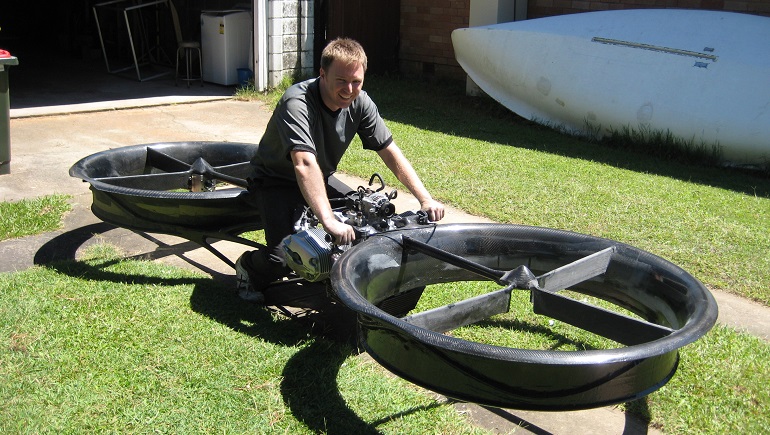
The U.S. Army is working on a futuristic “hoverbike” that could carry one to two soldiers up to ten feet off the ground at speeds around 60 miles per hour over land and water.
The Army Research Laboratory signed a contract with SURVICE Engineering and Malloy Aeronautics to develop a hoverbike prototype for the Army to test in three to five years.
SURVICE is based in Maryland and Malloy is based in Britain. The two companies will first develop a commercial version of the hoverbike that can carry about 250 pounds and cost about $80,000 before the companies produce a military variant, said Mark Butkiewicz, SURVICE Engineering’s manager of applied technology. He explained that the Army would like the bike to carry about 400 to 800 pounds to allow soldiers to pack their weapons and equipment on board.
The hoverbike could potentially go faster and higher but the Army wants to make sure its safe for soldiers to ride and not drifting into a helicopter’s mission set. Butkiewicz said to think of the project in some ways like a horse.
“If you fall off a horse you can get up and keep going. You can’t do that with a helicopter. That’s what we’re talking about here. Keeping it at about 10 feet off the ground, which in some ways is tougher to do,” Butkiewicz said.
For more details: US Army to develop futuristic hover bike to transport soldiers
The Army Research Laboratory signed a contract with SURVICE Engineering and Malloy Aeronautics to develop a hoverbike prototype for the Army to test in three to five years.
SURVICE is based in Maryland and Malloy is based in Britain. The two companies will first develop a commercial version of the hoverbike that can carry about 250 pounds and cost about $80,000 before the companies produce a military variant, said Mark Butkiewicz, SURVICE Engineering’s manager of applied technology. He explained that the Army would like the bike to carry about 400 to 800 pounds to allow soldiers to pack their weapons and equipment on board.
The hoverbike could potentially go faster and higher but the Army wants to make sure its safe for soldiers to ride and not drifting into a helicopter’s mission set. Butkiewicz said to think of the project in some ways like a horse.
“If you fall off a horse you can get up and keep going. You can’t do that with a helicopter. That’s what we’re talking about here. Keeping it at about 10 feet off the ground, which in some ways is tougher to do,” Butkiewicz said.
For more details: US Army to develop futuristic hover bike to transport soldiers
7. Microwave Gun - Capable of Disabling Drones and Warheads
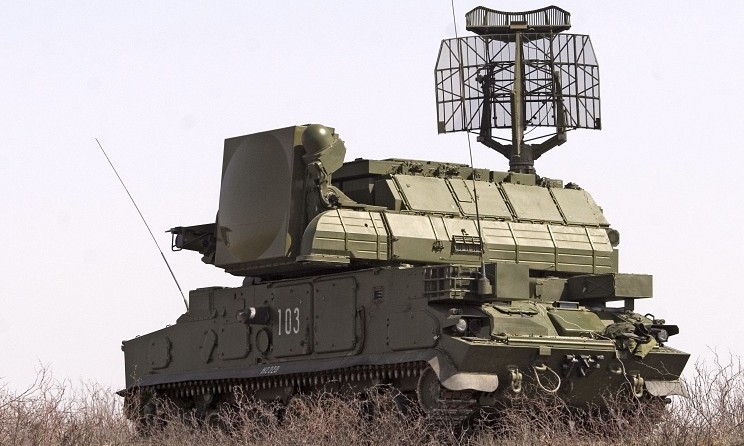
The Russian military has created a “microwave gun” capable of disabling drones known as unmanned aerial vehicles and the warheads in airborne projectiles, a spokesman for the Kremlin-owned United Instrument Manufacturing Corp. said on June 15, 2015.
Kremlin-owned United Instrument Manufacturing Corporation has constructed and begun testing on a “microwave gun” capable of knocking both UAVs and missiles out of the air from six miles away. What’s more, the gun is also supposedly capable of disrupting the radio electronic equipment of low-flying planes.
“The new system is equipped with a high-power relativistic generator and reflector antenna, management and control system, and a transmission system which is fixed on the chassis of BUK surface-to-air missile systems. When mounted on a special platform, the ‘microwave gun’ is capable of ensuring perimeter defense at 360 degrees,” a company spokesman told Sputnik News.
The system is capable of out-of-band suppression of the radio electronic equipment of low-altitude aircraft and the assault elements of precision weapons. The gun is able to deactivate the equipment of aircraft and UAVs, and neutralize precision weapons.
There are currently also plans to use the system for testing Russian military radio electronic systems against the impact of powerful super-high-frequency emission.
For more details: Russia develops ‘microwave gun’ that can disable drones and warheads
Kremlin-owned United Instrument Manufacturing Corporation has constructed and begun testing on a “microwave gun” capable of knocking both UAVs and missiles out of the air from six miles away. What’s more, the gun is also supposedly capable of disrupting the radio electronic equipment of low-flying planes.
“The new system is equipped with a high-power relativistic generator and reflector antenna, management and control system, and a transmission system which is fixed on the chassis of BUK surface-to-air missile systems. When mounted on a special platform, the ‘microwave gun’ is capable of ensuring perimeter defense at 360 degrees,” a company spokesman told Sputnik News.
The system is capable of out-of-band suppression of the radio electronic equipment of low-altitude aircraft and the assault elements of precision weapons. The gun is able to deactivate the equipment of aircraft and UAVs, and neutralize precision weapons.
There are currently also plans to use the system for testing Russian military radio electronic systems against the impact of powerful super-high-frequency emission.
For more details: Russia develops ‘microwave gun’ that can disable drones and warheads
8. Unmanned Hypersonic Aircraft
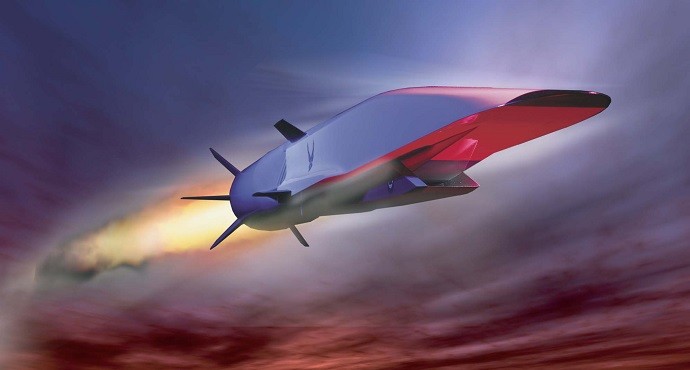
The U.S. Air Force aims to develop an unmanned flying weapon by 2023 that would travel at least five times the speed of sound and might transform the nature of warfare.
The Pentagon has been experimenting with unmanned hypersonic aircraft for years, launching them from bombers over the Pacific with limited success.
For a vehicle to be considered hypersonic, it must travel at least at Mach 5 — five times the speed of sound, or about 3,800 mph. That’s fast enough to travel across the U.S. in around 30 minutes.
Air Force Maj. Gen. Thomas Masiello last year called hypersonic technology a potential “game-changer” that will transform the nature of warfare.
According to US Air Force Chief Scientist Mica Endsley, China and Russia are also known to be actively building and testing hypersonic vehicles.
Such weapons could be launched from long distances and travel so fast they’d be virtually undetectable before reaching their targets.
The US Air Force and the Defense Advanced Research Projects Agency (DARPA) are working together with the mission of making such an aircraft.
For more details: US to develop game-changer Hypersonic aircraft
The Pentagon has been experimenting with unmanned hypersonic aircraft for years, launching them from bombers over the Pacific with limited success.
For a vehicle to be considered hypersonic, it must travel at least at Mach 5 — five times the speed of sound, or about 3,800 mph. That’s fast enough to travel across the U.S. in around 30 minutes.
Air Force Maj. Gen. Thomas Masiello last year called hypersonic technology a potential “game-changer” that will transform the nature of warfare.
According to US Air Force Chief Scientist Mica Endsley, China and Russia are also known to be actively building and testing hypersonic vehicles.
Such weapons could be launched from long distances and travel so fast they’d be virtually undetectable before reaching their targets.
The US Air Force and the Defense Advanced Research Projects Agency (DARPA) are working together with the mission of making such an aircraft.
For more details: US to develop game-changer Hypersonic aircraft
9. Russia’s Robotic T-50 Fighter Jet
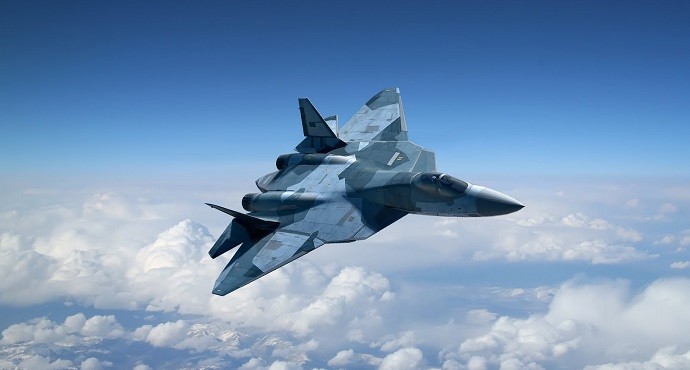
Russia’s new fifth-generation T-50 fighter jet, which is currently undergoing tests before the start of production in 2016, incorporates elements of automation which make it more like a robot than a fighter plane, explains a representative from the Rostech corporation.
The Sukhoi PAK FA fighter jet, also known as T-50, is “already to some degree a flying robot, where the aviator fulfils the function not only of pilot, but is actually one of the constituent parts of the flying apparatus. That is, the reaction of the aviator is a part of the control loop,” Vladimir Mikheev, an advisor to the deputy head of the Radioelectronic Technologies Concern [KRET], said.
According to Mikheev, another innovative featured employed in the T-50 jet fighter is “smart paneling.”
“If we take the wingtip, from one perspective it functions as a wing, but from another it’s also a part of the Himalaya active defense system,” the official is cited by Sputnik news agency.
Previously, KRET said that T-50 is going to have the most advanced stealth capabilities, leaving even the only combat-ready fifth-generation fighter, the US Air Force’s Lockheed F-22 Raptor, behind.
“The T-50 is now ahead of not only all other fighters of the Russian Army, but also foreign models. For example, the visibility of the American fifth-generation F-22 fighter is 0.3-0.4 square meters.. [whereas] the Sukhoi PAK FA’s visibility stands at between 0.1 and 1 square meters” the developer stressed.
The Russian Air Force plans to purchase 55 T-50 fighter jets between 2016 and 2020.
For more details: Russia’s new robotic T-50 fighter jet undergoing tests
The Sukhoi PAK FA fighter jet, also known as T-50, is “already to some degree a flying robot, where the aviator fulfils the function not only of pilot, but is actually one of the constituent parts of the flying apparatus. That is, the reaction of the aviator is a part of the control loop,” Vladimir Mikheev, an advisor to the deputy head of the Radioelectronic Technologies Concern [KRET], said.
According to Mikheev, another innovative featured employed in the T-50 jet fighter is “smart paneling.”
“If we take the wingtip, from one perspective it functions as a wing, but from another it’s also a part of the Himalaya active defense system,” the official is cited by Sputnik news agency.
Previously, KRET said that T-50 is going to have the most advanced stealth capabilities, leaving even the only combat-ready fifth-generation fighter, the US Air Force’s Lockheed F-22 Raptor, behind.
“The T-50 is now ahead of not only all other fighters of the Russian Army, but also foreign models. For example, the visibility of the American fifth-generation F-22 fighter is 0.3-0.4 square meters.. [whereas] the Sukhoi PAK FA’s visibility stands at between 0.1 and 1 square meters” the developer stressed.
The Russian Air Force plans to purchase 55 T-50 fighter jets between 2016 and 2020.
For more details: Russia’s new robotic T-50 fighter jet undergoing tests
10. 3D/4D Printer for Making Weapons and Defense Accessories
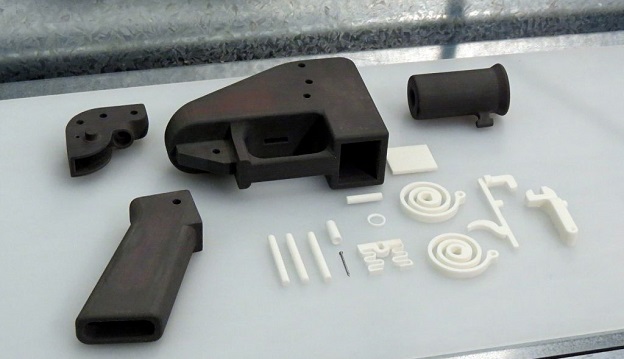
The billion-dollar defense industry is at the bleeding edge of this innovation, with the US military already investing heavily in efforts to print uniforms, synthetic skin to treat battlewounds, and even food, said Alex Chausovsky, an analyst at IHS Technology.
Scientists at the Massachusetts Institute of Technology have already invented “4D printing” — creating materials that change when they come into contact with elements such as water.
One day, that could mean things like printed uniforms that change colour depending on their environment.
In 2014, British defense firm BAE Systems put the first printed metal part in a Tornado jet fighter.
“It’s long term, but it’s certainly our end goal to manufacture an aerial vehicle in its entirety using 3D printing technology,” said Matt Stevens, heads of BAE 3D printing division.
But the real revolution of 3D printing is less about the things you can make and more about where you make them.
Being able to take printers to a warzone promises a radical shake-up of combat and the defense industry, said Peter W Singer, an expert in future warfare at the New America Foundation. He added that, “Defense contractors want to sell you an item but also want to own the supply chain for 50 years... but now you’ll have soldiers in an austere outpost in somewhere like Afghanistan who can pull down the software for a spare part, tweak the design and print it out.”
This could lead militaries to cut out private defense companies altogether. And by combining 3D printing with assembly line robotics, those that remain will be enormously streamlined.
3D printing could even change foreign policy, for instance by undermining sanctions.
“The US has sanctioned everything from fighter jet spare parts to oil equipment. 3D printing could turn sanctions — which have been a crucial part of foreign policy for a generation or more — into an antiquated notion,” said Singer.
Then there are the scarier prospects that come with reducing the barriers to arms manufacturing.
“Think of master bombmakers in the Middle East making new designs that look like everyday products or a lone wolf operator printing a plastic gun he can get past security at the White House,” said Alex Chausovsky.
For more details: 3D printing will revolutionize war and foreign policy, say experts



















